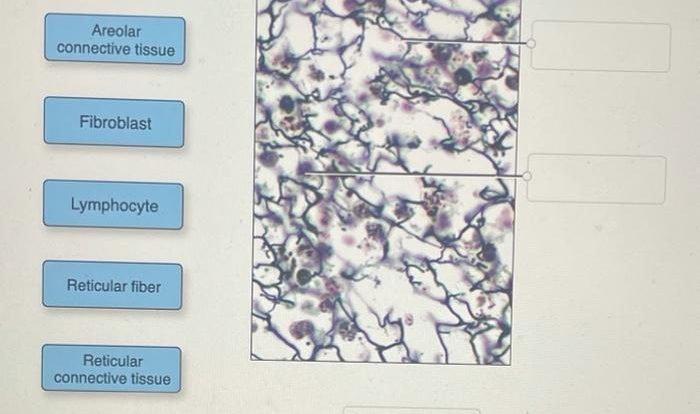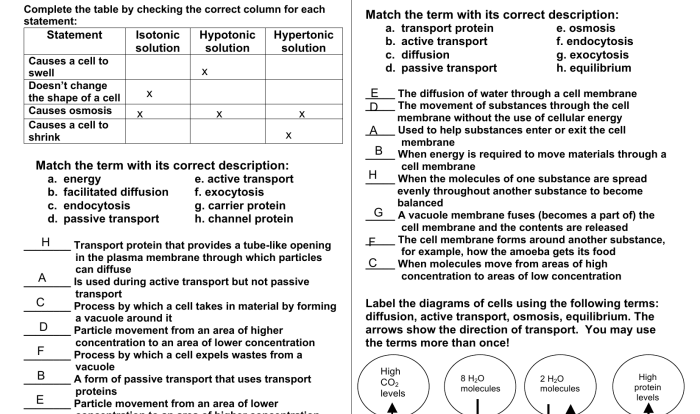Venn diagram of a plant and animal cell – Embark on a scientific exploration of the captivating similarities and intriguing differences between plant and animal cells through the lens of a comprehensive Venn diagram. Delving into the depths of their cellular structures, functions, and interactions, this analysis unravels the fundamental principles that govern the diversity of life.
By comparing and contrasting the essential organelles, including the cell wall, cell membrane, cytoplasm, nucleus, chloroplasts, vacuoles, and mitochondria, this Venn diagram serves as an invaluable tool for understanding the unique adaptations and shared characteristics of these two fundamental cell types.
Plant and Animal Cell Comparison
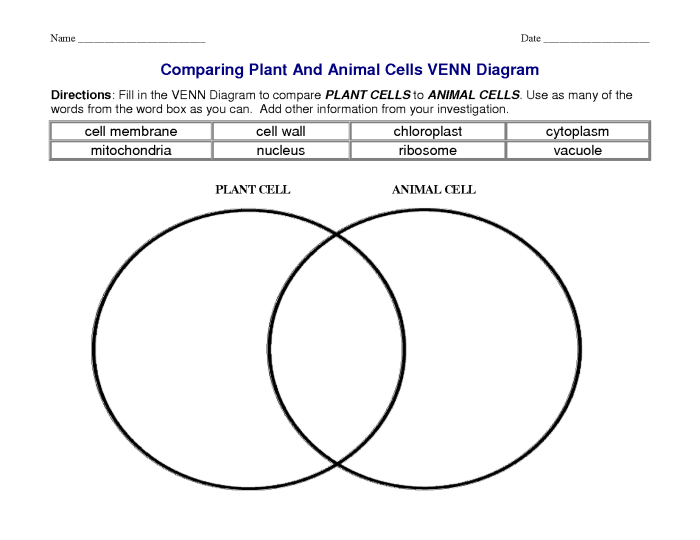
Plant and animal cells are the basic units of life for all living organisms. Despite their shared fundamental characteristics, they also exhibit distinct differences that reflect their unique functions and adaptations.
| Characteristic | Plant Cell | Animal Cell |
|---|---|---|
| Cell Wall | Present, made of cellulose | Absent |
| Cell Membrane | Present | Present |
| Cytoplasm | Present | Present |
| Nucleus | Present, surrounded by a nuclear membrane | Present, surrounded by a nuclear membrane |
| Chloroplasts | Present | Absent |
| Vacuoles | Large, central vacuole | Small, numerous vacuoles |
| Mitochondria | Present | Present |
Plant Cell Structure and Function
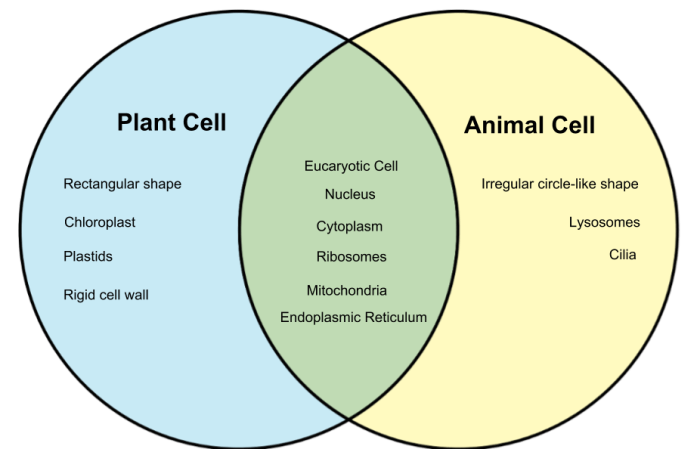
Cell Wall
The cell wall is a rigid structure that surrounds the cell membrane. It provides support, protection, and shape to the plant cell.
Cell Membrane, Venn diagram of a plant and animal cell
The cell membrane is a thin, flexible layer that surrounds the cytoplasm. It controls the movement of materials into and out of the cell.
Cytoplasm
The cytoplasm is the jelly-like substance that fills the cell. It contains all of the cell’s organelles.
Nucleus
The nucleus is the control center of the cell. It contains the cell’s DNA.
Chloroplasts
Chloroplasts are organelles that contain chlorophyll. They are responsible for photosynthesis, the process by which plants convert sunlight into energy.
Vacuoles
Vacuoles are large, membrane-bound sacs that store water, nutrients, and waste products.
Animal Cell Structure and Function
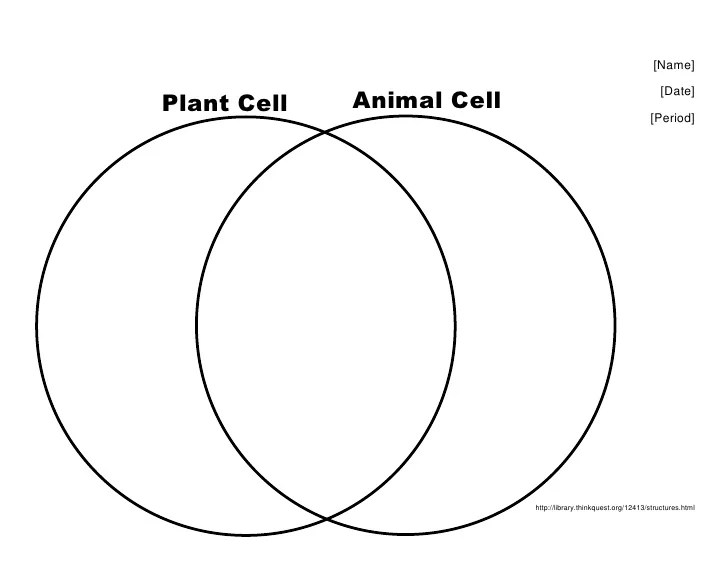
Cell Membrane, Venn diagram of a plant and animal cell
The cell membrane is a thin, flexible layer that surrounds the cytoplasm. It controls the movement of materials into and out of the cell.
Cytoplasm
The cytoplasm is the jelly-like substance that fills the cell. It contains all of the cell’s organelles.
Nucleus
The nucleus is the control center of the cell. It contains the cell’s DNA.
Mitochondria
Mitochondria are organelles that produce energy for the cell.
General Inquiries: Venn Diagram Of A Plant And Animal Cell
What is the primary function of the cell wall in plant cells?
The cell wall provides structural support and protection, maintaining the cell’s shape and preventing excessive water uptake.
How do chloroplasts contribute to the unique characteristics of plant cells?
Chloroplasts are responsible for photosynthesis, the process by which plants convert sunlight into energy.
What is the role of mitochondria in both plant and animal cells?
Mitochondria are the “powerhouses” of the cell, generating energy through cellular respiration.
